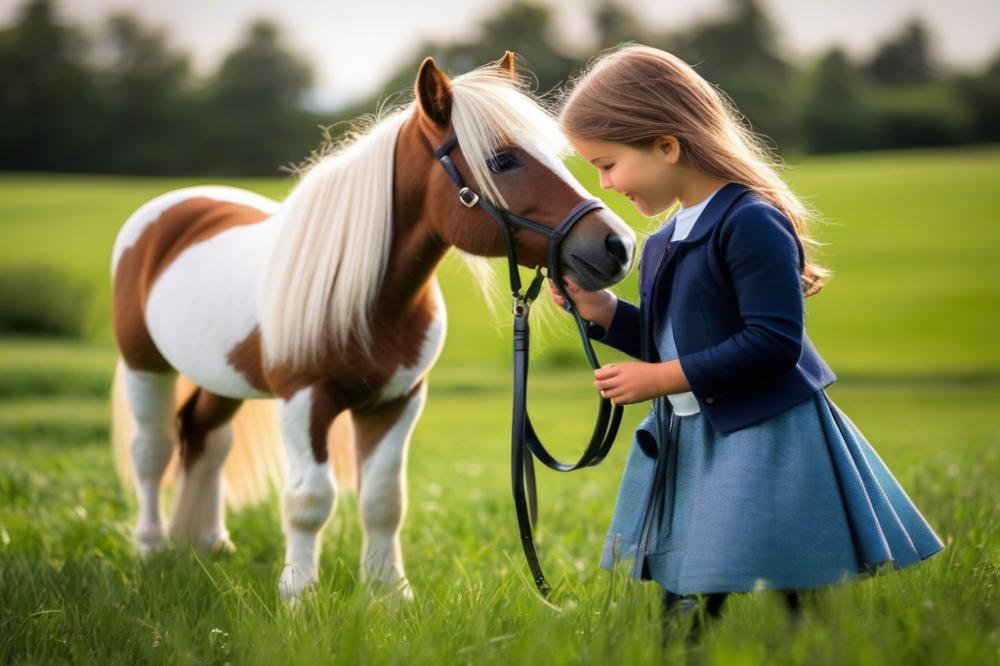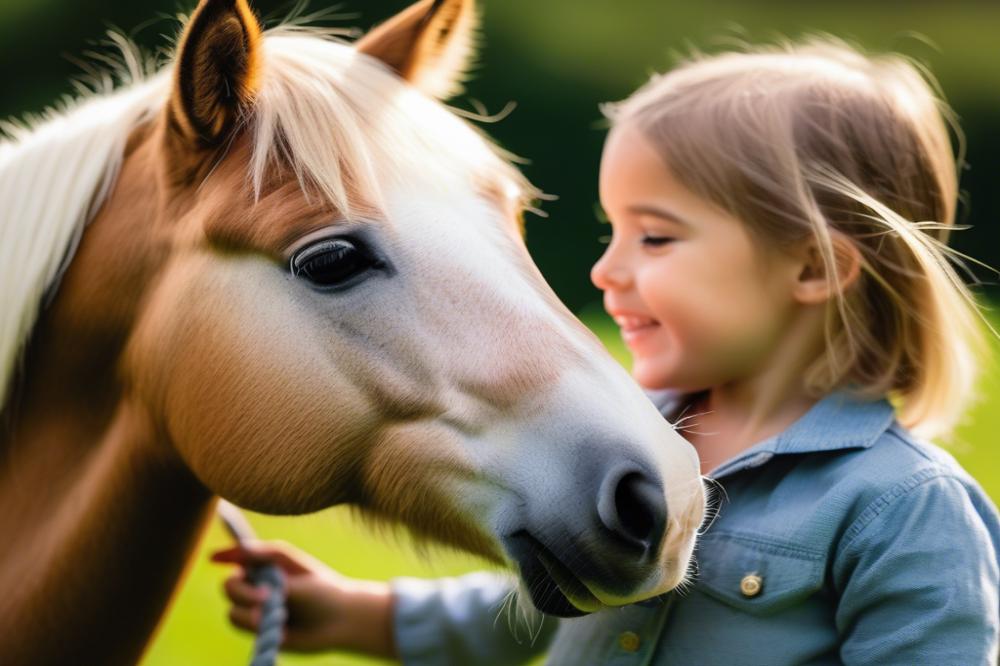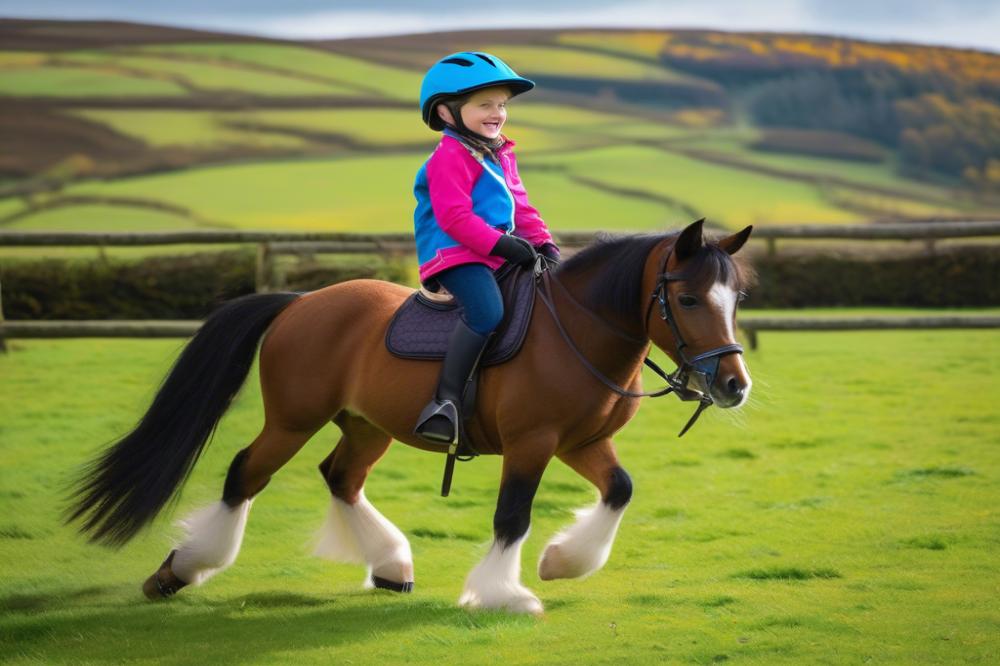How to Teach Kids to Ride Welsh ponies with confidence
Welsh ponies are beloved by many for their gentle nature and spirited personalities. These small, sturdy equines offer an excellent combination of strength and agility, making them ideal mounts for young riders. Their manageable size allows children to feel safe while gaining valuable riding experience. Many families have found that these ponies can inspire a lifelong love for riding and outdoor adventure.
Building confidence in kids riding is essential for their growth and enjoyment. When young riders feel secure on their pony, they are more likely to succeed and want to continue. Confidence leads to better communication between rider and pony, which fosters a stronger bond. Children who ride with assurance are more likely to take on challenges and tackle new experiences with enthusiasm.
Taking the time to teach kids how to ride effectively not only helps them with equestrian skills but also promotes discipline and responsibility. These lessons translate into various aspects of their lives. Learning to ride can boost a child’s self-esteem, encouraging them to push beyond their comfort zone.
In summary, understanding the traits of Welsh ponies and fostering confidence in young riders is vital. Parents and instructors alike play a pivotal role in this journey. With the right approach, the experience of riding can be immensely rewarding for children and can create lasting memories. Riding is not just about the technique; it’s about fostering a connection and a sense of accomplishment. Each ride can pave the way for new adventures and friendships.
Understanding Welsh Ponies

Characteristics of Welsh Ponies
Welsh ponies are known for their small stature and strong build. Typically, they stand between 12.2 and 14.2 hands high. This breed is muscular, making them suitable for various activities. With their friendly demeanor, they often bond well with young riders. Their intelligence allows for quick learning, but it requires consistent handling. Many come with a variety of colors and markings, adding to their charm.
Benefits of Riding Welsh Ponies for Kids
There are multiple advantages to riding these ponies. They provide a safe and gentle experience for beginners. Kids can develop a sense of confidence as they learn to ride. These ponies often have a calm temperament, which helps new riders to relax. Learning to care for and ride a pony fosters responsibility and patience. Additionally, their size makes them manageable for children, promoting independence in their riding skills.
Selecting the Right Pony for Your Child
Choosing the right pony is crucial for a positive experience. Consider your child’s skill level and comfort with animals. A well-trained pony can make a significant difference in a child’s learning journey. Look for a pony that has a gentle personality and a history of good behavior with young riders. It’s beneficial to consult with riding instructors to assess your child’s needs. Spending time with potential ponies can also help determine the best fit. Ultimately, the right match builds confidence and enhances the enjoyment of riding.
Building Confidence in Young Riders

Creating a Supportive Learning Environment
It’s important to create a space where young riders feel safe and supported. A calm atmosphere can help reduce anxiety. Ensure that the surroundings are familiar. A friendly adult or experienced rider should be nearby to assist. Kids need to hear encouraging words, especially during their first attempts. Positive reinforcement goes a long way. Create an environment where mistakes are seen as part of learning. This mindset fosters resilience.
Encouraging Gradual Exposure to Horseback riding techniques
Start with the basics. Introduce children to caring for the pony before riding begins. Let them brush the pony and learn its parts. This builds a bond and makes the child more comfortable. Once ready to ride, break the process down into simple steps. For instance, mastering mounting can come first, followed by basic balancing exercises. Praise them for each small victory. Gradual exposure helps them adjust at their own pace. In time, they’ll feel more at ease.
Implementing Effective Teaching Methods
Use clear, simple instructions when teaching. Complex commands may confuse young riders. Start each session with a brief recap of previous lessons. This reinforces their knowledge and builds confidence. Demonstrations can also be very helpful. Children often learn best by watching before trying. Incorporate fun games that build riding skills. Games keep the experience enjoyable and engaging. Finally, engage in regular discussions about safety. Understanding the importance of safety can help riders feel more secure and responsible.
Pony Riding Lessons

Structuring effective riding lessons for children
Creating a structured program for riding lessons is vital. Kids often thrive on routine. Each lesson should begin with a brief overview of what will be covered. Introductions to basic safety rules help to set clear expectations. The instructor can then move on to a warm-up period. This might include basic stretches for both the child and the pony. The riding itself should focus on skill development in a progressive way. Initially, short sessions can help build stamina and concentration. Gradually, longer rides can build confidence.
Focusing on essential equestrian skills
Teaching core skills lays the groundwork for a successful riding journey. Balance is paramount, especially when children are learning to control their mounts. This can be emphasized through simple exercises. Walking, trotting, and stopping should be practiced repetitively to solidify the child’s abilities. Encouraging proper posture is also crucial, as it affects both the rider’s comfort and control. Providing positive reinforcement can motivate children to improve. Celebrating small achievements fosters their love for riding.
Incorporating pony grooming into lessons
Pony grooming should play a significant role in lessons. Caring for the pony helps children bond with their ride. Teaching them how to properly brush and check hooves develops responsibility. This process also makes kids feel more invested in their ponies. It enhances their understanding of horse care overall. Introducing grooming as a routine can foster respect for animals. Each session can include this practice, reinforcing safety and handling skills.
The role of mounted games in skill development
Mounted games provide an excellent way to enhance learning. They can improve coordination and team spirit among riders. Games often require quick thinking and adaptability, which are crucial skills when riding. These activities also make lessons fun and engaging. Incorporating friendly competition adds excitement and encourages perseverance. Children are more likely to push their limits in a playful environment. As a result, their confidence grows, paving the way for more advanced riding experiences.
Child Safety Measures
Importance of Safety Gear
Proper safety gear is a non-negotiable aspect of riding. Helmets are vital, as they protect the head in case of falls. Children should wear boots with a small heel to prevent slipping out of the stirrups. Additionally, gloves help improve grip on the reins and prevent blisters. Always select gear that fits well. Well-fitting equipment can make all the difference in a child’s confidence and safety.
Teaching Safety Protocols Around Ponies
Awareness around ponies is crucial. Children must learn to approach from the side and not from behind. Representing a calm demeanor can help. Encourage kids to speak softly and avoid sudden movements. Show them how to gently pet and interact. Practicing these behaviors will make time with ponies enjoyable. This approach builds trust, which is essential for both the child and the animal.
How to Ensure a Safe Riding Environment
Create a safe space for riding. Check the area for any obstacles that could be dangerous. Maintain a safe distance from fences and other animals. Establish clear rules that everyone follows. Supervision is essential, especially for younger riders. It promotes safety and reassures parents. Create a calm atmosphere to reduce anxiety. This thoughtful setting gives kids confidence as they learn.
Building Trust Between Rider and Pony
Strategies for Building a Bond with Welsh Ponies
Establishing a relationship with a pony starts on the ground. Spend time simply being with the animal. Grooming sessions can be enjoyable for both rider and pony. This interaction creates familiarity and comfort. Kids should also learn to approach the pony calmly, always being aware of its body language. Letting the pony come to them can foster trust. It is essential for riders to understand that patience is key.
Taking the time to understand the pony’s needs is important too. Every pony has its own personality and quirks. Encouraging children to observe the pony’s reactions can teach them about its feelings. This knowledge builds a stronger connection.
Understanding Pony Behavior
Understanding how a pony behaves is crucial for all young riders. Body language often communicates more than words can. For example, pinned ears may indicate irritation or discomfort. Recognizing these signs allows for appropriate responses. This responsiveness can help avoid potential issues before they escalate.
Observing other ponies can be enlightening as well. Watching how they interact with each other provides insight into normal behavior. Riders can learn what is typical and what might be a sign of concern. Familiarity with these signals helps in creating a safer environment.
Using Positive Reinforcement Techniques
Positive reinforcement is an effective way to train ponies. Rewarding desired behaviors encourages repetition. Kids can use treats, praise, or gentle petting to reinforce good actions. Celebrating even the smallest accomplishments builds a pony’s confidence. Consistency is vital in this method.
Teaching young riders to remain calm during mistakes is equally important. Instead of scolding, they should acknowledge the error and redirect the pony gently. This approach instills a sense of security in the pony. Over time, both rider and pony learn to communicate better.
Incorporating fun activities can also strengthen their bond. Simple games can make learning enjoyable. Engaging activities create positive associations for both the pony and the rider. This enjoyment enhances confidence in both parties, paving the way for a successful partnership.
Riding Dress and Preparation
Appropriate Riding Attire for Kids
Selecting the right clothes is vital for young riders. Safety comes first, so a well-fitted riding helmet is essential. Look for one that meets safety standards and fits snugly. Comfortable riding pants or breeches are ideal, as they allow for flexibility. Moreover, avoid jeans; they can be restrictive. Sturdy footwear is another important aspect. Boots with a small heel will provide stability and help prevent slipping in the stirrups. Layering is smart too, since barn temperatures can fluctuate. A moisture-wicking shirt and a lightweight jacket can keep a child comfortable during the ride.
Preparing the Pony for the Ride
Before getting on, it’s crucial to ready the pony. Start by checking the saddle and bridle to make sure they fit correctly. A well-fitted saddle prevents discomfort for the animal. If the pony seems restless, take a moment to calm it. Approach calmly and speak softly to establish a connection. This also helps the child feel more at ease. Once everything is in place, it’s time to lead the pony to a safe area for mounting.
Essential Grooming Tips Before Riding
Grooming is an essential step before every ride. Brush the pony’s coat to remove dirt and loose hair. This not only makes them look good but also aids in detecting any injuries or irritations. Clean the hooves carefully to remove any stones or debris. This helps prevent infections. After grooming, offering a treat can create a positive association for both the pony and the child. Remember to wash hands afterward to promote good hygiene. A tidy pony is not just more pleasant to ride, but it also reflects the rider’s respect for the animal.
The Path to Confident Equestrian Skills
Confidence plays a crucial role in the journey of learning to ride. When children feel secure and self-assured on a pony, they are more likely to embrace new challenges. This comfort allows them to explore their abilities and develop their skills further. Fear can hold back even the most talented riders. Therefore, nurturing a confident mindset is essential.
Ongoing practice is vital for improvement. Regular pony riding lessons give kids the opportunity to refine their techniques. Each ride offers a chance to learn something new. Riding should be enjoyable, not just a test of skills. Encouragement from instructors and parents helps build the right atmosphere for growth. As they progress, children can tackle more complex tasks at their own pace.
Fostering a passion for riding can create lifelong equestrian skills. Children should feel empowered to ask questions and seek guidance. Open discussions with instructors can enhance their understanding of the sport. Building a bond with their pony also leads to greater confidence. These relationships are meaningful and can enhance a rider’s experience.
In the end, it’s about more than just riding. It’s about growing as individuals, facing challenges, and celebrating successes. Support, patience, and practice are the keys to enjoying the ride. Each step taken builds a foundation for future adventures in the equestrian world.



